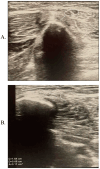Common Peroneal Nerve Paralysis Following Rapid Weight Loss-A Case Report and Literature Review
- PMID: 40507050
- PMCID: PMC12157737
- DOI: 10.3390/nu17111782
Common Peroneal Nerve Paralysis Following Rapid Weight Loss-A Case Report and Literature Review
Abstract
Common peroneal nerve neuropathy at the fibular head secondary to weight loss is known as slimmer's paralysis. Although this pathology has long been documented in medical literature, it has gained more clinical significance in recent years due to the global rise in obesity and the increasing pursuit of rapid weight loss methods. While case reports exist in the current literature, there are limited data regarding its optimal management. This study summarizes all reported cases of common peroneal nerve paralysis after weight loss and reports one additional case, exploring disease mechanisms as well as diagnostic and therapeutic strategies. A literature review was conducted on the platforms PubMed, Google Scholar, and EMBASE. A total of 380 patients were included. Laterality of neuropathy was specified in 297 (78.16%) patients: 285 (95.96%) with unilateral neuropathy and 12 (4.04%) with bilateral neuropathy. A total of 19 (5.00%) patients had sudden onset, and in 145 (38.16%) of cases, the Tinel's sign was positive. Additionally, 373 (98.16%) patients underwent nerve conduction studies, demonstrating the fibular head as the site of injury. MRI or ultrasound imaging of the knee is indicated to exclude compressive etiology. A total of 302 (79.47%) cases were treated surgically and 42 (11.58%) conservatively, predominantly with favorable outcomes, regardless of the therapeutic approach chosen. Although the predominance of surgically treated cases in the literature limits definitive treatment recommendations, conservative management appears appropriate when an extended recovery time is acceptable, while surgical decompression is indicated in cases showing no improvement after 3 months.
Keywords: bariatric surgery; foot drop; peroneal neuropathy; rehabilitation therapy; slimmer’s palsy; weight loss.
Conflict of interest statement
The authors declare no conflicts of interest.
Figures






References
-
- Lostein T., Jackson-Leach R., Powis J., Brinsden H., Gray M. World Obesity Federation, World Obesity Atlas 2023. [(accessed on 23 September 2024)]. Available online: https://www.worldobesity.org/resources/resource-library/world-obesity-at....
-
- Parrott J., Frank L., Rabena R., Craggs-Dino L., Isom K.A., Greiman L. American Society for Metabolic and Bariatric Surgery Integrated Health Nutritional Guidelines for the Surgical Weight Loss Patient 2016 update: Micronutrients. Surg. Obes. Relat. Dis. 2017;13:727–741. doi: 10.1016/j.soard.2016.12.018. - DOI - PubMed
Publication types
MeSH terms
LinkOut - more resources
Full Text Sources
Medical
Research Materials

